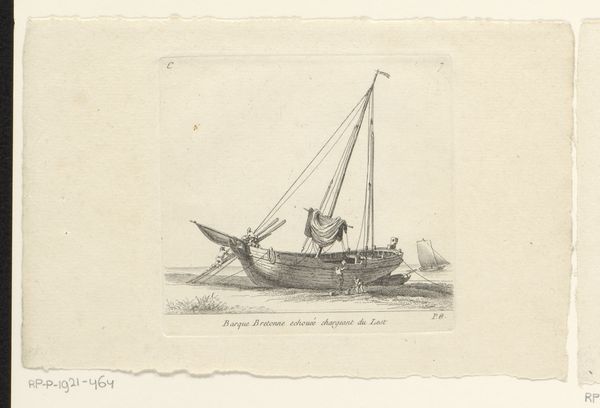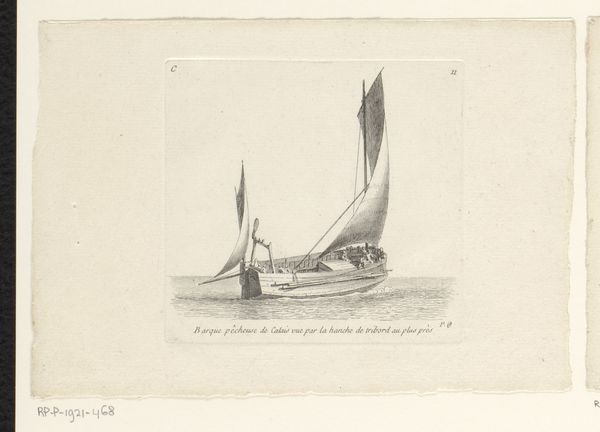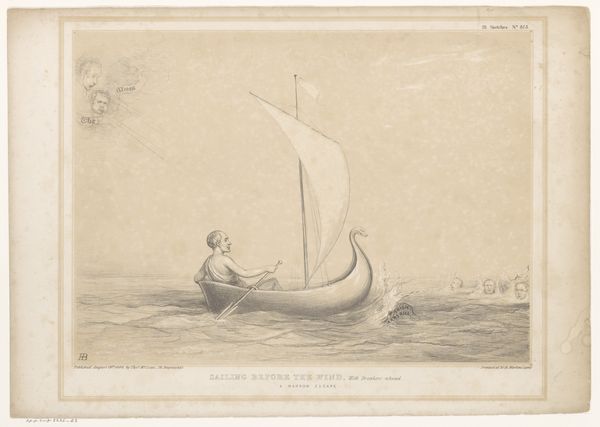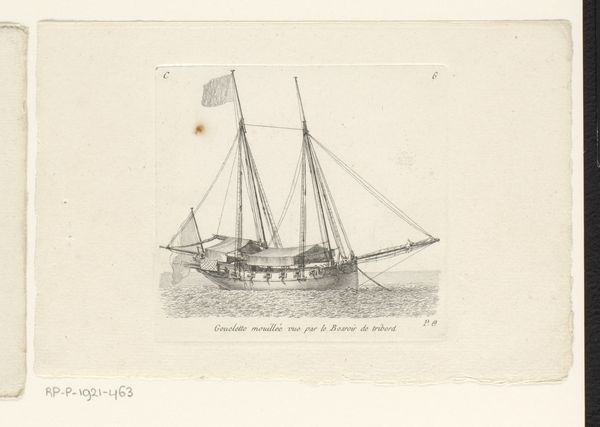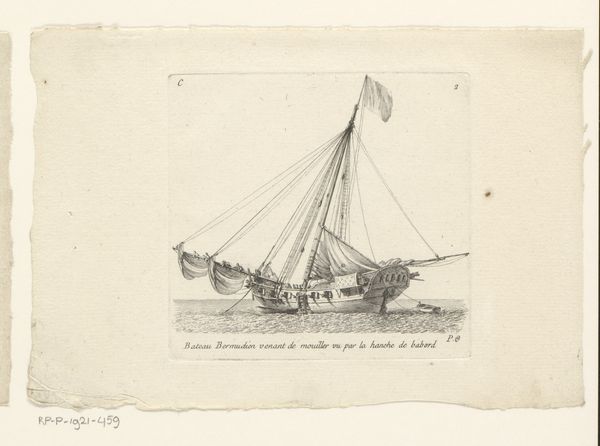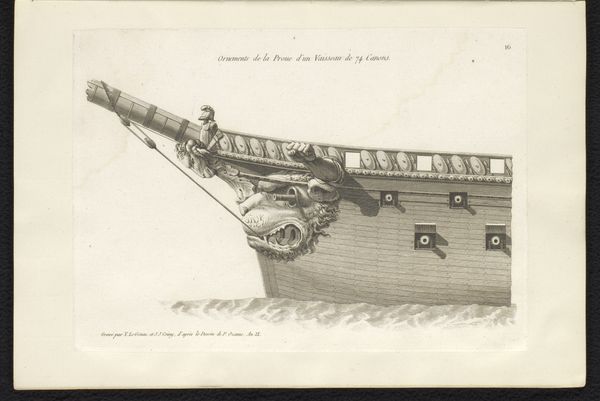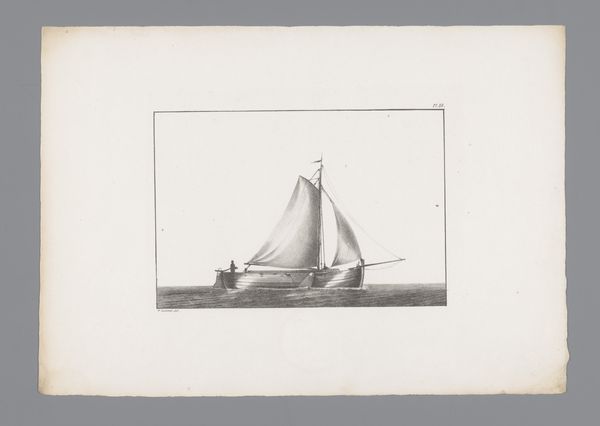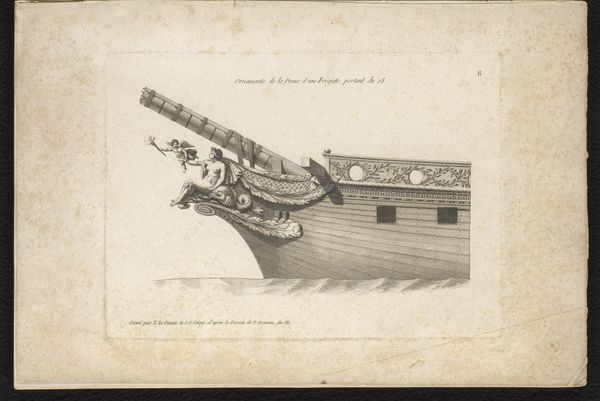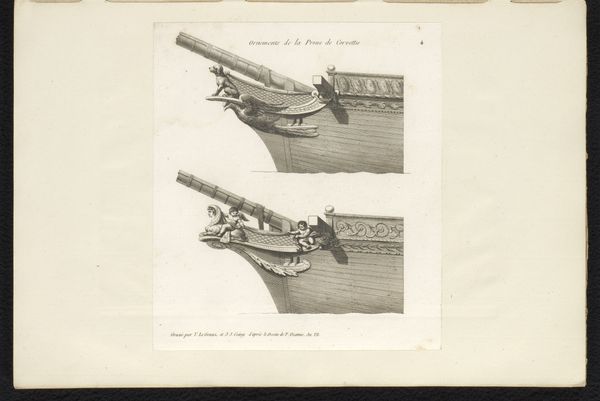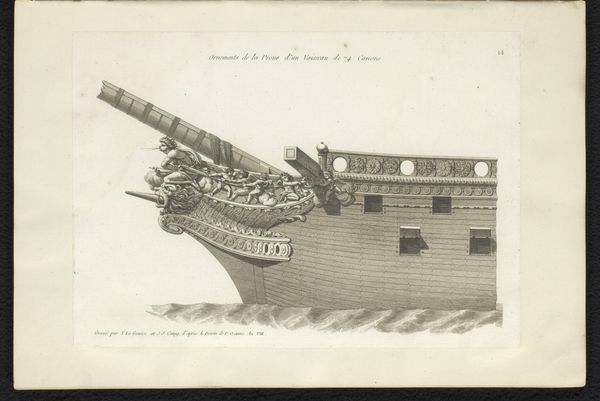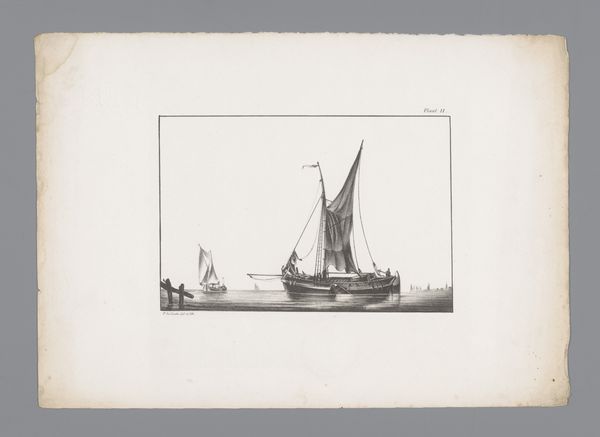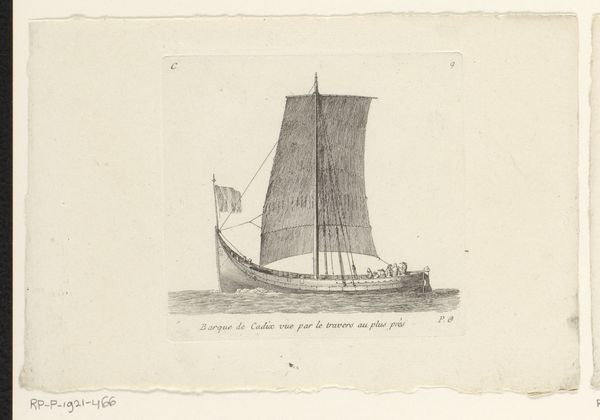
drawing, print, engraving
#
drawing
#
neoclacissism
# print
#
engraving
Dimensions: height 200 mm, width 281 mm
Copyright: Rijks Museum: Open Domain
Editor: This print by Joseph Coiny, from around 1798, is called "Figurehead of a Schooner with a Putto and Dragonflies". The neoclassical style feels so restrained. I'm interested in the figurehead itself – a winged child, or putto, amongst all these classical elements. What do you make of it? Curator: It's compelling, isn’t it? Notice how the putto doesn’t just decorate; he *controls*, guides this schooner through unseen waters. Think about the deeper cultural symbols. The schooner speaks to journeys, right? Trade, exploration… even conquest. What then, does the putto steering represent to you? Editor: Innocence perhaps guiding commerce, but maybe also something a little darker… control over natural resources. Curator: Precisely! And observe those dragonflies… historically, they symbolize transformation. A fleeting existence, the ephemeral beauty of life. Why couple that, do you think, with maritime expansion? What contrast exists there? Editor: Maybe a sense of warning, or an awareness of the fragility of this kind of…dominion? Is the fleeting beauty of the dragonfly hinting at the transience of the Empire itself? Curator: Exactly. Symbols whisper across centuries. The dragonflies act as a memento mori. What seemed purely decorative reveals itself to be an introspective prompt, and invites contemplation on cultural memory. What a layered experience it is! Editor: Definitely. Looking closely at how these familiar symbols can be recontextualized and, honestly, made newly meaningful is incredibly helpful. Curator: Absolutely! Art like this really reminds us of how powerful images are. They condense narratives, encode cultural anxieties, and provoke reflection across time.
Comments
No comments
Be the first to comment and join the conversation on the ultimate creative platform.
